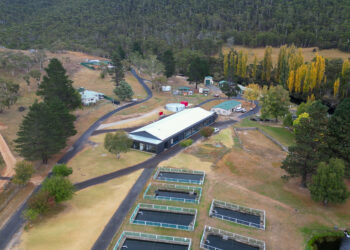BREAM fishing is booming again.
Our forebears specialised in handline fishing with cord lines on corks, which evolved into light monofilament line fishing with rods and reels and bait. Then along came lures, initially hard-bodied divers, then plastics, now surface poppers, fished with braid or fluorocarbon.
Bream competitions abound and there are even specialty magazines for bream aficionados. Yellowfin bream in the temperate zones, black bream in the south, pikey bream in the tropics … all lure-eating targets with some overlapping range and hybridisation possibilities. Hardy species, with good survival rates if carefully handled and released. Popular eating fish, probably more so for the non-angling fish-buying public and restaurant punters than anglers themselves.
In WA, black bream are a major sportfishing target, but they’ve been under pressure both from commercial and amateur fishing attention and aquatic environmental change.
Hence the Blackwood River restocking project. Over a two year period, the Australian centre for Applied Aquaculture Research released hatchery-reared fingerlings with dye stained otoliths (ear bones) to enable them to be distinguished from wild fish. Murdoch University fish scientists monitored the survival and growth of the released fish through to their successful spawning. The WA Fish Foundation now intends to continue with this work to identify any natural recruitment that may have occurred in addition to the stocked fish and to attempt to find solutions to current ongoing black bream stock problems.
Currently the Murdoch team are continuing to monitor the “progress” of cultured fish in the Blackwood River estuary. They’re measuring the contribution of cultured fish to the commercial catch of the species and looking for circumstantial evidence that the spawning of stocked fish has led to an increase in commercial catches. They’re also examining why there doesn’t appear to be an increase in the number of wild bream in the system. It seems that a likely cause of reduced breeding/recruitment is low rates of freshwater discharge over several years of low rainfall. There may of course be other environmental factors at play.
The original studies were funded by the national Fisheries Research and Development Corporation (FRDC). This type of research has significant implications for bream populations right across the country and by extension for anglers targeting bream. It’s to some extent paralleled in NSW by the Research Angler Program, currently focussing on mulloway, and similar activities in the other states and territories.
These programs are vital for our sport’s future and all anglers should be aware of the work involved. For the WA bream project, go to www.waff.com.au/projects/blackwood-river and for the NSW mulloway work to www.dpi.nsw.gov.au/fisheries/recreational/researchangler.
John Newbery is Fishing World’s Environment Editor.

















